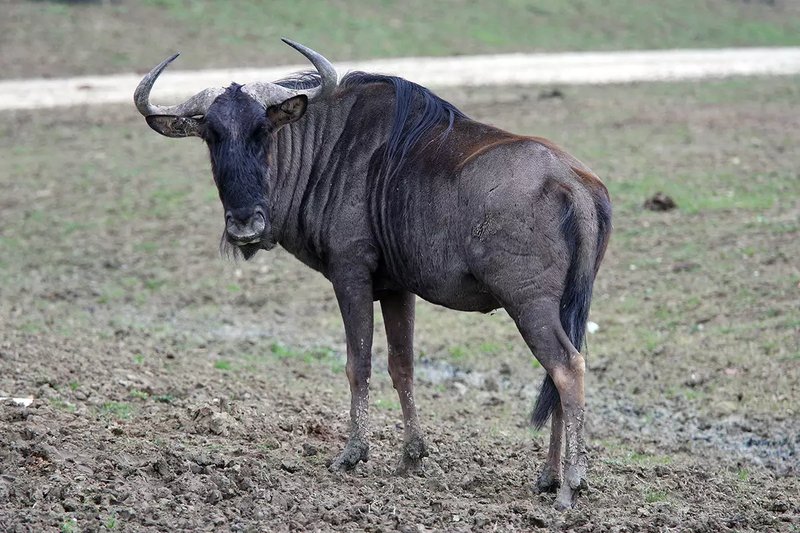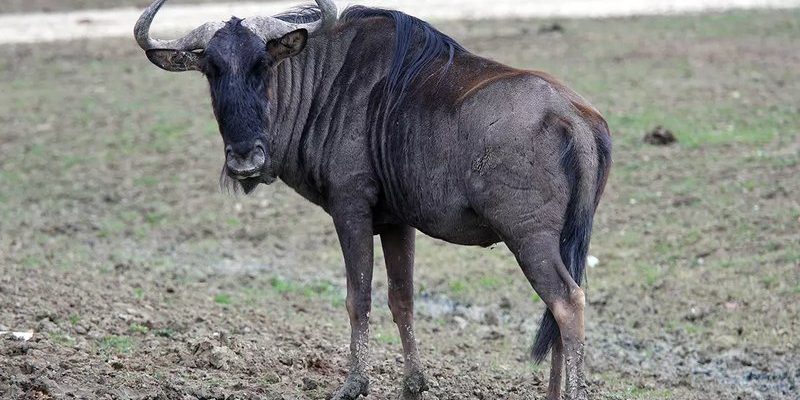
In the animal kingdom, the gnu stands out for its distinctive features and behaviors. Seeing them in their natural habitat is like witnessing a living piece of art. With a mix of both grace and clumsiness, these creatures have interesting lives that are tied closely to the seasons and the diverse landscape they inhabit. So, what makes the gnu so special? Grab a cup of coffee and let’s explore!
1. The Great Migration
One of the most awe-inspiring phenomena involving gnus is the Great Migration. Every year, thousands of these animals embark on an epic journey across the Serengeti in Tanzania and the Masai Mara in Kenya. Picture this: a massive wave of gnus moving in unison, crossing rivers, and facing predators along the way. It’s not just for show; this migration is their search for fresh grazing and water sources.
During migration, gnus encounter various challenges, including crocodile-infested rivers. Honestly, it’s both thrilling and terrifying to watch! This annual trek is believed to be one of the largest animal migrations on Earth, and it plays a vital role in the ecosystem. Not only do the gnus benefit, but their movement also helps distribute nutrients across the grasslands, benefiting other wildlife.
2. Unique Appearance
If you spotted a gnu, you might think it looks like nature’s critique of mixing different animals! With a large, muscular body, a massive head, and those iconic curved horns, they truly have a standout appearance. Their body structure is designed for endurance; these animals are built to run for long distances, which they often need to do to evade predators.
What’s even more interesting is their coat. The gnu has a shaggy mane and a dark, flowing beard that gives it a rugged look. This unique appearance isn’t just for show; it helps in various ways. The coat can protect them from harsh weather conditions, and their strong legs are perfect for quick escapes when danger arises.
3. Social Animals
You might be wondering if gnus are solitary creatures. The truth is, they’re quite the opposite! Gnus are very social animals and thrive in herds. These herds can range from just a few individuals to thousands during migration. Living in a group provides safety in numbers, which is essential since they share their habitat with predators like lions and hyenas.
Within these herds, gnus have complex social structures. Mothers often recognize their calves through unique vocalizations and scents. There’s a lot of interaction among them, with individuals grooming each other or engaging in playful behaviors. This social bonding not only strengthens their relationships but also creates a supportive environment for their young.
4. Diet and Feeding Habits
When it comes to what gnus eat, they are primarily grazers. Their diet mainly consists of grasses, which means they play a significant role in maintaining the grassland ecosystem. With their strong, flat teeth, they can efficiently graze on tough grasses that many other animals can’t digest.
Gnawing through grass isn’t all they do, though. Sometimes they will browse on shrubs and leaves when grasses are scarce. Honestly, watching a gnu feed can be quite entertaining. They have a tendency to munch with their heads down, oblivious to their surroundings unless a predator is nearby.
5. Mating Rituals
When it comes to romance, gnus have their own way of doing things. The mating season is marked by elaborate rituals where males display their strength and agility in attempts to attract females. You might see males engaging in fights, showcasing their strength and dominance. It’s like an animal version of a dance-off!
Once a female chooses her mate, she typically gives birth to a single calf after a gestation period of about eight months. This calf needs to stand and run within a few minutes of being born to keep up with the herd. It’s fascinating how nature ensures the survival of the young in such a challenging environment.
6. Communication Skills
GnUs are not just pretty faces; they have a whole toolbox of communication methods. They use a range of vocalizations to express different feelings, from grunts to snorts and even bellows. This vocal communication is crucial, especially during migration when distance from the herd may separate individuals.
Body language also plays a significant role. When a gnu senses danger, you might notice it raising its head or twitching its ears. These subtle cues can alert the rest of the herd to stay alert and look out for potential predators. This combination of vocal and physical signals is a testament to their intelligence and social nature.
7. Predators and Survival
Life as a gnu isn’t without its dangers. They are prey for various large predators, including lions, hyenas, and crocodiles. To survive, gnus have developed several strategies. As mentioned, living in herds offers safety in numbers, but they also rely on their incredible speed. Adult gnus can run up to 50 miles per hour in short bursts, making them tough targets for predators.
Interestingly, they also have a habit of staying alert, often scanning their surroundings for threats while grazing. This heightened awareness is essential as they navigate life on the savannah, where danger lurks around every corner.
8. Conservation Status
While gnus are relatively abundant, their populations face challenges from habitat loss and hunting. Conservation efforts are crucial to ensure their survival. Many national parks and reserves have been established to protect these incredible animals and their habitats.
Tourism plays a significant role in conservation. By visiting national parks to witness the Great Migration, tourists contribute to local economies and encourage protection measures. It’s a beautiful cycle where appreciation for the gnu can directly impact their conservation.
9. Cultural Significance
GnUs have also left their mark on cultures, especially within Africa. They are often featured in local folklore and art, symbolizing resilience and endurance. In some communities, they represent a connection to the land and the rhythms of nature.
You might find that many African tribes have different names for gnus, reflecting their importance in local lore and everyday life. They remind people of the balance of nature and the need to coexist with wildlife.
10. Gnu in Popular Culture
Lastly, the gnu has made its way into popular culture! You might have seen them in various documentaries or even animated movies. With their quirky looks and fascinating behaviors, they capture the hearts of many. There’s something about watching these creatures in their natural habitat that feels both grounding and inspiring.
Whether it’s on screens or in books, gnus remind us of the beauty of wildlife and our responsibility to protect it. They’ve become symbols of the wild, representing the rawness and beauty of the natural world.
In conclusion, gnus are more than just interesting animals; they’re a vital part of their ecosystems and a source of inspiration for many. From their impressive migrations to their unique social structures, each fact about the gnu offers a glimpse into the wonders of nature. Next time you think of these incredible creatures, remember their fascinating lives and the role they play in our world. If you ever get a chance to see them in person, take it! You’ll not only learn more about them but also feel a deeper connection to the natural world.

